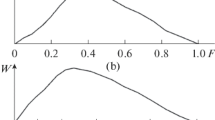Abstract
The historical records of astronomical phenomena may play a significant role in comet identification. Getting an accurate result is based on many factors, of which the calculation of orbital elements is the most important. This paper presents a “Cross Reference” method in which the perturbation of Jupiter is the only considered factor used to attempt an efficient way of comet identification with ancient Chinese historical records. In this method, the records before and after the calculated result from orbital determination within the error range are compared with the historical records to find the correlated perihelion time, and then, with five other orbital elements at the perihelion time, the ephemeris is calculated. If the calculated ephemeris matches the historical records, it is concluded that the comet determined by orbital calculation is the same as the one recorded in history. With this method, three comets with four historical records have already been found.
Similar content being viewed by others
References
Lu X W. Identification of cometary records in ancient China. Prog Astron, 2000, 18: 38–45
Hasegawa I. Orbits of ancient and medieval comets. Publ Astron Soc Jpn, 1979, 31: 257–270
Hasegawa I, Nakano S. Periodic comets found in historical records. Publ Astron Soc Jpn, 1995, 47: 699–710
Marsden B G. The next return of the comet of the Perseid meteors. Astron J, 1973, 78: 654–662
Yao K, Yeomans D K, Weissman P. The past and future motion of Comet P/Swift-Tuttle. Mon Not R Astron Soc, 1994, 266: 305–316
Anderson J D, Esposito P B, Martin W, et al. Experimental test of general relativity using time-delay data from Mariner 6 and Mariner 7. Astrophys J, 1975, 200: 221–233
Zhou J L. Celestial Mechanics. Nanjing: Nanjing University, 2005. 43–67
Hasegawa I, Nakano S. Orbit of periodic comet 153P/Ikeya-Zhang. Mon Not R Astron Soc, 2003, 345: 883–888
Carusi A, Kresák Ľ, Kresáková M, et al. Observations of periodic comet d’Arrest in 1678 and implications for its evolutionary history. Astron Astrophys, 1991, 252: 377–384
Yeomans D K, Kiang T. The long-term motion of comet Halley. Mon Not R Astron Soc, 1981, 197: 633–646
Kresák Ľ, Kresáková M. Secular brightness decrease of periodic comets. Icarus, 1990, 86: 82–92
Chin Y N, Huang Y L. Identification of the guest star of AD 185 as a comet rather than a supernova. Nature, 1994, 371: 398–399
Author information
Authors and Affiliations
Corresponding author
Rights and permissions
About this article
Cite this article
Zhang, L., Zhao, G. The identification of comets in Chinese historical records. Sci. China Phys. Mech. Astron. 54, 150–155 (2011). https://doi.org/10.1007/s11433-010-4135-6
Received:
Accepted:
Published:
Issue Date:
DOI: https://doi.org/10.1007/s11433-010-4135-6




